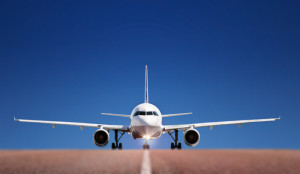AVIATION AND PUBLIC HEALTH
AVIATION AND PUBLIC HEALTH
By PROFESSOR JANGU BANATVALA
Are we forgetting to consult on the health implications of airport development?
The United Kingdom’s Department for Transport recently drafted an Aviation Policy Framework for the UK to achieve a balance between the economic importance of aviation and promoting good health and quality of life in the community.
The framework stressed transparency in decision making, and it has been sent for consultation to the Department for Environment, Farming and Rural Affairs; the Treasury; the Department of Energy and Climate Change; and the Department for Business, Innovation, and Skills but disappointingly not to the Department of Health.
A commission chaired by Howard Davies was launched in 2012 to make recommendations on airport expansion in the UK, and, most recently, a public consultation on London’s airport expansion opened with the promise of “the fairest possible evaluation” of the available options. Evidence from the public consultation will be submitted to the commission.

Safeguarding public health in the face of industrial development should be one of a government’s main priorities. The World Health Organization 1999 Charter on Transport, the Environment and Health – still extant and adopted by the UK
Government – recommended that community wellbeing be put first in transport and infrastructure policies. It emphasised coordination between transport, environment, and health policies.
The major direct adverse effects of aviation on health are noise, pollution, and the spread of communicable diseases. Indirect effects are an increasing challenge, as growth in air travel makes the aviation industry a major driver of climate change.
Adverse health effects from noise are well established, particularly poor performance at work from interrupted sleep and impaired cognitive development in primary school children who live near airports. A narrative review commissioned and funded by the US Federal Aviation Administration Office of Environment and Energy and published in 2010 concluded that there was a likely association between repeated exposure to night-time aircraft noise and hypertension and ischaemic heart disease in adults.
A 2007 study commissioned by the Department for Transport recommended the use of lower thresholds for noise metrics in dose-response research, and action is well overdue.
Noise from both aircraft and road transport affects health, but aircraft noise has the greatest effect. Although modern aircraft are less noisy, numbers of flights are increasing. Airports are served by road, rail, and air transport, and people living nearby are subjected to noise from all these sources, with attendant potentially serious health outcomes.
Efforts are being made to reduce air pollution from industrial and domestic sources, but less effort is directed at noise from aircraft. Pollution associated with the aviation industry is also a health hazard. Because of radiative forcing, the impact of emissions from jet aircraft is about twice that from land based sources.

Particulate and other emissions result from aircraft and road traffic in the vicinity of airports, and are associated with cardio respiratory morbidity and mortality. Landing and take-off emissions have received most attention, but recently cruise emissions have been shown to affect human health; about 8000 premature deaths annually worldwide may be attributable to this source.
Regardless of whether technological advances in aircraft design and performance will reduce noise and air pollution, aircraft flying now may continue to be airworthy for many years.
As for climate change, its health impacts are not confined to national boundaries. Although the developing world may be bearing the major brunt, the UK’s resilience may diminish as climate shocks become more severe and frequent. This has to be reconciled with the aspiration not only of the UK, but of countries such as India and China, to facilitate growth in business, trade, and tourism by expanding civil aviation.
Unlike Environmental Impact Assessments, Health Impact Assessments (HIAs) are not obligatory, but should be conducted before policy decisions are made on major developments, to ensure that commercial interests are not placed before health.
The government’s record on airports is disappointing. For the major London airports only developments at Stansted had HIAs. However, the assessments were conducted by BAA (British Airports Authority), scarcely a transparent arrangement, because BAA, acting as the regulator and enabler, also had a major obligation to its shareholders.
The 2007 report of the Royal Commission on Environmental Pollution recommended that HIAs should be mandatory, incorporated explicitly in sustainability appraisals, and subject to independent review. No action has been taken. It also emphasised that restriction of further airport development was crucial.
Expert committees may occasionally produce inconvenient truths; the commission has been disbanded and not replaced.
In the UK the Civil Aviation Authority will be responsible for regulating aviation and airport planning. It is essential that health is considered when airport developments are planned. The Department of Health and the newly designated Public Health
England must make their voice heard in the debate on the future of aviation policy. So far they have not.

About the Author
Professor Jangu Banatvala is emeritus professor of clinical virology at King’s College London, School of Medicine and Dentistry and Mala Rao professor of international health at the Institute for Health and Human Development, University of East London. He is also advisor on health related issue to the Stop Stansted Expansion Campaign. www.stopstanstedexpansion.com
This article was first published in the BMJ on 4th Feb 2013. To subscribe see: http://www.bmj.com/subscribe
